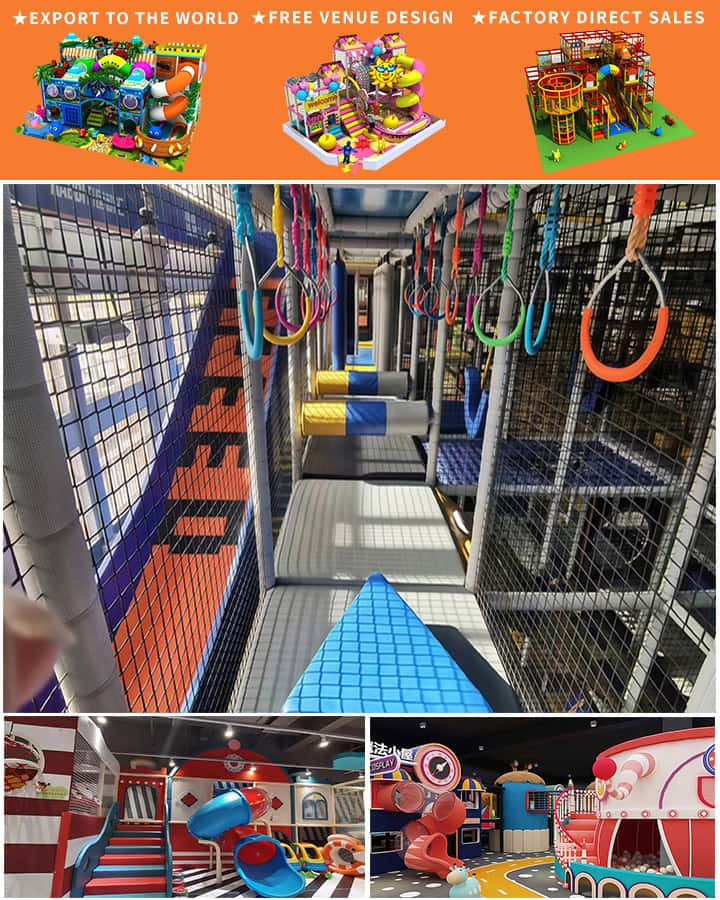Soft play equipment has become a staple in playgrounds, daycare centers, and home playrooms worldwide. These structures and toys offer children a safe environment to explore their physical limits while providing endless entertainment. But have you ever wondered what materials contribute to the safety and durability of soft play equipment? Let’s delve into the components that make up these colorful and cushioned marvels.
The Framework
At the heart of soft play equipment is its structural framework, which needs to be both robust and lightweight. This is typically made from metal or plastic. Metal frames, often constructed from galvanized steel tubing, provide excellent stability but can pose a risk if children come into contact with exposed edges. For this reason, metal is usually coated or covered with additional protective layers.
Plastic frames are more common in modern soft play sets because they are lighter and inherently safer. High-density polyethylene (HDPE) is frequently used due to its durability and resistance to wear and tear. HDPE is also easy to clean, making it an ideal choice for environments where hygiene is paramount.
The Padding
The padding is arguably the most critical component of soft play equipment as it ensures safety during falls and collisions. Most high-quality soft play equipment uses closed-cell foam for padding. This type of foam offers superior impact absorption without compromising on firmness, making it perfect for cushioning sharp edges and corners. It is also resistant to moisture, which prolongs its lifespan and reduces maintenance needs.

In addition to closed-cell foam, manufacturers sometimes use open-cell foam, which is softer but less durable. Open-cell foam is generally reserved for applications where maximum comfort is prioritized over longevity.
Surface Materials
The outer layer of soft play equipment needs to be both engaging and easy to maintain, which is why vinyl is often the material of choice. Vinyl surfaces are not only visually appealing with vibrant colors and patterns but are also waterproof and easy to sanitize. Some high-end models even utilize non-toxic, phthalate-free vinyl to ensure that the equipment is safe for even the youngest children.
Another popular option for surface materials is nylon, particularly in climbing walls and interactive panels. Nylon fabric is durable, flexible, and resistant to UV rays, which makes it suitable for outdoor installations. Additionally, nylon can be textured to provide better grip, enhancing the safety of climbers and explorers.
Special Features
Innovative designs often incorporate memory foam for added comfort, especially in areas where children might linger, like sitting blocks or leaning posts. Memory foam adapts to the shape of the child, offering personalized support that enhances the play experience.
For interactive elements, such as digital panels or sensory toys, manufacturers might use ABS plastic. This material combines durability and aesthetic flexibility, allowing for the incorporation of electronic components without sacrificing safety or visual appeal.
Environmental Considerations
With growing awareness around sustainability, some manufacturers are turning to eco-friendly materials. Recycled polypropylene for frames and organic cotton fabrics for coverings are becoming more prevalent, offering consumers greener alternatives without compromising on quality.
Conclusion
Soft play equipment serves as a haven for young adventurers, combining fun with safety. The materials used—ranging from sturdy metal and plastic frames to cushioning foams and durable vinyl surfaces—are meticulously chosen to ensure that children have a secure yet enjoyable environment in which to play. As technology and environmental consciousness advance, so too will the materials behind these beloved play structures, ensuring they remain safe, durable, and sustainable for future generations.
So next time you see your child gleefully navigating a colorful obstacle course, take a moment to appreciate the science and engineering that go into creating a space where imagination and safety coexist harmoniously.




